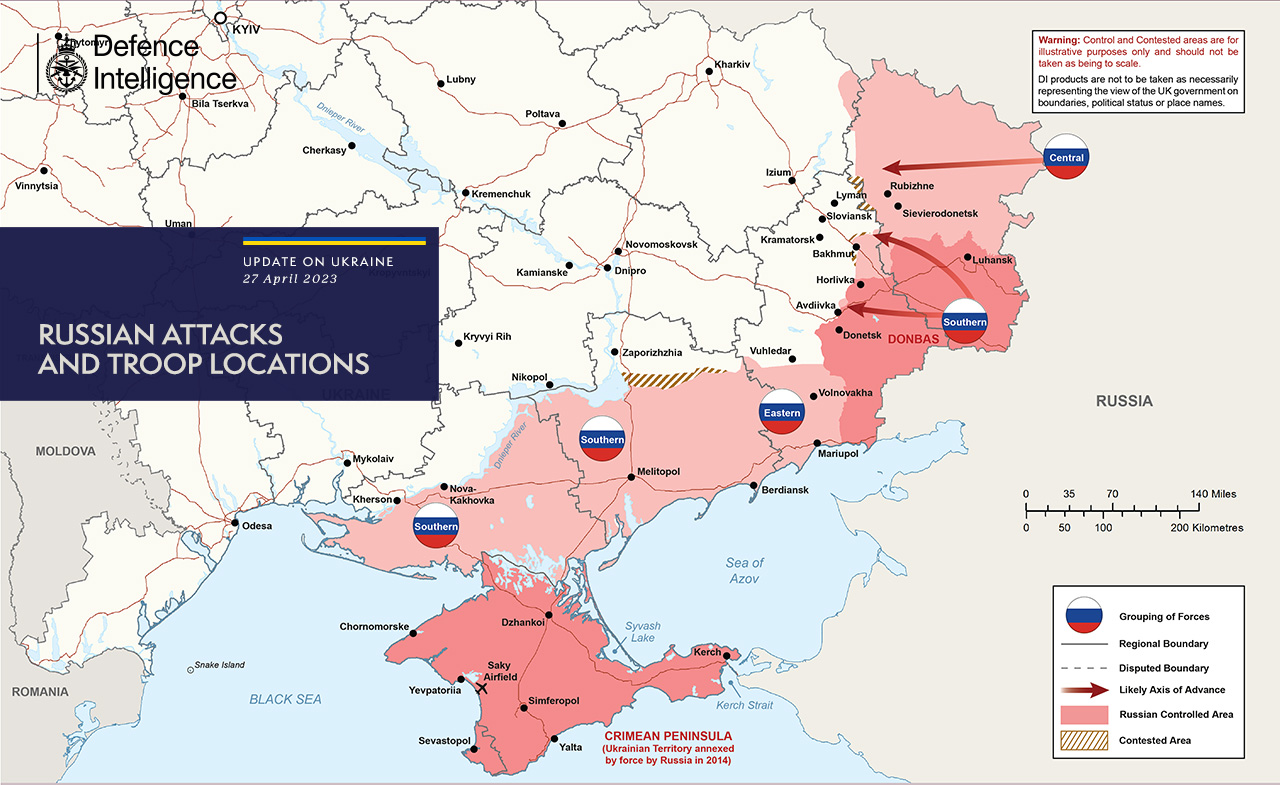
The Russian army operating in Ukraine today is larger than when the Kremlin launched its invasion in February 2022, but remains vulnerable to a Kyiv counteroffensive expected in the coming weeks, NATO’s top commander told the House and Senate armed services committees this week.
“This war is far from over,” Army Gen. Christopher Cavoli told the House panel on Wednesday. On Thursday, he added to the Senate, “I think [the Russians] can fight another year.”
But in testimony to both panels, he said the United States and allies already have provided the Ukrainians 98 percent of the artillery, tanks and armored vehicles Kyiv said it needs to launch the counteroffensive.
The Ukrainians “have to be better than the Russian force they will face” when and where they will strike. He said Russia has strategic depth in manpower despite thousands of killed and wounded. Cavoli said the Kremlin is moving to address vulnerabilities that have been exposed in 14 months of combat. Russia has only lost one warship and about 80 fighters and tactical bombers in an air fleet numbering about 1,000 so far in the war, he added.
At the House hearing, Cavoli said Russian submarine activity has picked up in the North Atlantic since the beginning of the war and none of the Kremlin’s strategic nuclear forces have been affected by operations in Ukraine.
“There are things we will need to continue to deliver” to the Ukrainians, he added at the Senate hearing Thursday. Cavoli most often repeated Kyiv’s need for more ground-based air defense to protect its forces and citizens, especially against unmanned aerial systems. “I’m comfortable about where we’re going” in supplying Ukraine for the expected counteroffensive, he said.
As for providing U.S. fighters like the F-16s to Ukraine, Celeste Wallander, the assistant secretary of defense for international security affairs, told the House panel that the request is “about eighth on their list of priorities” for the spring.
Cavoli told both panels that Poland and Slovakia had shipped MiG-29 fighters, aircraft the Ukrainians already have in inventory, to Kyiv to provide additional air defense. Without going into detail to the House panel, he said some special U.S. equipment “has been married” to the older Soviet aircraft.
“Legacy Soviet aircraft have been helpful to the Ukrainians because their pilots are trained on those aircraft. They know how to use them. They know how to maintain them,” Wallander added.
Under questioning from both panels, Cavoli said that although the United States has been the largest contributor of military and financial aid to Ukraine, more than half a dozen allies have given more in proportion to their gross domestic product than the U.S.
Additionally, one-third of those countries have sent more than half their inventories of artillery, armored vehicles and tanks to Ukraine, as well as air defense systems, he said.
“We’re expecting Germany to live up to this government’s commitment to its 2 percent goal” of spending on security, Wallander told the House committee. Berlin is spending about 1.6 percent of GDP on security now. She added that Washington “is pressing [all NATO allies] on delivering capabilities” to the alliance when it meets in Vilnius, Lithuania this summer.
In addition to military supplies, Cavoli said allies are also treating “2,400 grievously wounded” Ukrainians. Sen. Roger Wicker (R-Miss.), the panel’s ranking member, added that Germany has also taken in 5 million Ukrainian refugees since Russia’s invasion in February 2022.
With the flow of ammunition, weapons and systems continuing, Cavoli told the panels: “we’re doing end-use monitoring” to ensure the materiel is sent to where it is supposed to be going. That starts at ports of entry in Poland, with the Americans and Ukrainians using the NATO logistics tracking system. It includes “laying eyes on things” or using bar codes in transit and monitoring where they end up, like in Odesa.
Cavoli acknowledged at both hearings that Iran has been sending unmanned aerial systems to make up for Russian losses, but declined to say during the open session whether Tehran is shipping other weapons or ammunition to the Kremlin. “We see other countries [like China] consider it, [but] we see precious few doing it.”
As for Chinese President Xi Jinping’s offer to Ukrainian Prime Minister Vladomir Zelensky to mediate the conflict, Cavoli said to the Senate panel that Beijing “should begin by condemning Russia’s unprovoked” invasion.
Cavoli added that NATO has “been successful so far” in not escalating the war. “We’ve managed to control every situation so far.”





